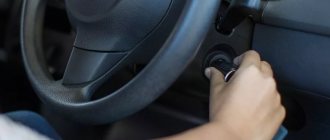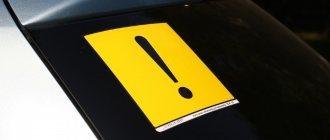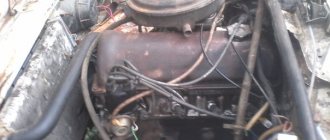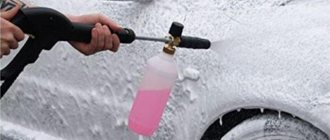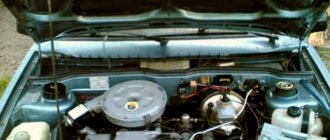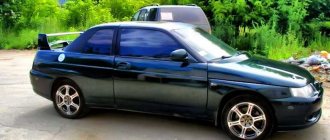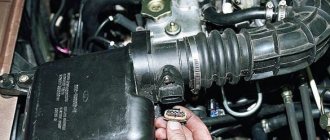Who is the pushrod starting procedure recommended for?
Before we look point by point at how to properly start a car from a pushrod, it is necessary to determine for which cars such a procedure is unacceptable. Remember once and for all that for the happy owners of a car with an automatic transmission, the car should not be pushed under any circumstances. No matter how “professionals” argue on the Internet that this is theoretically possible, it cannot be applied in practice. If you try to start the engine in such a car, you will probably end up with expensive automatic transmission repairs or, in general, replacement. Therefore, if you are the owner of an “automatic machine,” then you should not ask for advice, but you should immediately call a tow truck and take the car to a service station for diagnostics and repairs using special equipment.
If the braking system in your vehicle is faulty, then this is also a contraindication for this method, since failure to stop the car in time can lead to very sad and unpredictable consequences.
How can you tell if this is possible?
If your car has a manual transmission, then before pushing the car in hopes of starting the engine, you need to rule out other faults. If, when you try to start the engine, the starter engages but does not start, then there is no point in pushing the car. Here there is another malfunction, for example, such as a lack of gasoline in the fuel tank, various breakdowns in the engine itself (broken timing belt, etc.). In this case, you should not waste time, but it is better to immediately contact a car workshop. In this case, the car can be towed using a cable (“tie”).
Condition of the exhaust pipe in winter
If the car stops starting in winter, before resorting to pushing, pay attention to the exhaust pipe, as it may be clogged with snow, or be covered in ice due to condensate freezing in it. In such conditions, starting the engine will not be easy. However, you can try, as it will not cause damage. To try to start the engine, you should remove the battery and take it to a warm place, give it time to warm up to room temperature - this may take about those hours. After that, install the battery back and try to start again. Before starting, be sure to clear the exhaust pipe of snow.
Procedure if you have a carburetor
If your car is equipped with a carburetor, then the question of how to start a VAZ from a pusher, and a car of another brand, will not arise. But before considering the algorithm of sequential actions, you must first decide how you will set the car in motion. There are several options here:
- With the help of friends, neighbors, acquaintances, and other persons who will push your car a certain distance.
- With the participation of another vehicle and a vehicle cable.
- An ordinary roll down a mountain or slope.
- If you are confident in your strength and speed of reaction, then you can try to do it on your own. Place the lever in neutral, turn on the ignition and push the car yourself with the door open, subject to acceleration. As soon as you were able to increase the speed, you jump into the cabin while moving. Immediately depress the clutch, shift the manual transmission to third speed and quickly release the clutch. But this method is quite inconvenient.
Moreover, if you resort to the help of third parties, including when accelerating with the help of a tow rope, it is worth agreeing in advance on special identification marks so that the “helpers” can stop or stop the car at the right time.
The procedure for successfully starting the engine is as follows:
- the ignition must be turned on;
- With the clutch pedal depressed, set the gear shift knob to second or third speed. Please note that the clutch must be depressed before starting the engine;
- If the machine has a choke, then slightly loosen its lever. If it is not there, then lightly press the gas pedal several times to add fuel;
- then, using the selected option from the above, we begin the smooth movement of the car;
- as soon as the vehicle speed reaches 8 to 10 km/h, it is necessary to very carefully release the clutch pedal in order to start the engine by moving the wheels;
- If the car engine starts, then press the clutch again, stop the car and maintain engine speed at the desired level using the gas pedal or choke.
Let us remind you that this procedure is provided for cars equipped with an engine with a carburetor.
Conditions for successful launch
The car engine is started by rotating the crankshaft with a starter powered by battery energy. If turning the key in the ignition switch results in silence or the sound of the starter working hard, it is recommended to stop trying so as not to completely drain the battery. The higher the charge level, the greater the chance of starting the engine.
To prevent pushing a car from turning into a grueling physical exercise and to produce results, consider the following points:
- Starting a car with an automatic transmission from a pusher is unacceptable and is fraught with expensive repairs.
- The number of assistants must correspond to the weight of the machine. If 2 people (including the driver) can push a small car, then an SUV or minibus requires 4–5 helpers.
- Before forcibly starting a car equipped with a carburetor power system and a mechanical fuel pump, be sure to pump up the fuel manually.
- Levers for manual pumping are also found on old diesel engines with a mechanical injection pump (stands for high pressure fuel pump). Use this handle to pre-pressurize the line.
- The injector and the new diesel engine, equipped with an electric pump, are very difficult to push and start “cold” if the battery charge is close to zero.
The last point requires clarification. For normal operation of diesel and injection nozzles, the electric fuel pump creates a certain pressure in the line. During long periods of machine inactivity, it gradually decreases. When the battery is completely dead, when the ignition is turned on, there is not enough energy to operate the pump, and the pressure in the system remains low. To lift it, you need to spin the generator, that is, you will have to push the car for a long time or drag it in tow. Sometimes it's easier to find a working battery .
The warning regarding cars with automatic transmission is not unfounded. It is useless to forcibly rotate the gearbox shafts from the wheel side - without oil pressure, the input shaft will not engage with the crankshaft. Unless you accelerate the car to a speed of 50 km/h and turn on the Drive mode, which will lead to instant failure of the friction discs. It is strictly not recommended to carry out such experiments - the launch is carried out exclusively from the battery.
When is it possible to start the engine this way, but is it not recommended?
If the voltage in the network is very weak - the battery is almost completely discharged, it is not recommended to tow such an engine. The injection system involves the use of electronic control of injectors and an electronic fuel pump. Therefore, when the power unit starts operating, the voltage in the on-board network should be equal to 12 V - more or less is not recommended - surges are not welcome here.
If the voltage in the network is below 12 volts, you can start the engine from a pusher, but by towing another car, since it becomes necessary to accelerate the car to 20-30 km/h. Only at this speed will the generator create the required voltage and there will be a chance of starting.
How to start a motor from a pusher?
To push start the car, turn on the ignition and allow time for the electric fuel pump to build up pressure in the system. With mechanical fuel supply, pump gasoline manually, as recommended above.
Explain to the assistants found to push the car an important point: you must not rest against the planes of the body parts . Since modern cars are made of rather thin metal, flat elements are easily dented under strong pressure. The corners and stiffening ribs on the trunk should be chosen as support points.
The procedure for starting the engine is as follows:
- Sit in the driver's seat, depress the clutch pedal and engage third gear.
- Give the command to your assistants to start pushing the car.
- When you reach a speed of 10–15 km/h, slowly release the clutch. As soon as you feel a “pickup” from the engine, help it with the accelerator pedal.
- Shift to neutral, stop the car and apply the handbrake.
- Let the power unit idle for 5-10 minutes to recharge the battery. Don't forget to thank your saviors.
Towing a car
To start a manual car using this method, you will need a reliable tow rope, or, in extreme cases, a strong rope. Its ends should be tied to the load-bearing elements of the body or chassis. In a towing vehicle, this is a special eye, towbar or rear spring mount. Also hook your car to the front bracket or one of the levers.
The engine starts in the same order as a push start:
- Turn the key to the ignition position, press the clutch pedal and place the gearshift lever in 3rd gear.
- Give the signal to the driver of the front car to start moving.
- At a speed of 20–25 km/h, engage the clutch by releasing the pedal.
- As soon as the engine starts, depress the clutch again, signal to your assistant and brake both cars. While you begin to unhook the cable, do not turn off the engine.
Important point. Before you start your car, agree with the driver of the towing vehicle about the signs and actions to be taken. Let the go-ahead signal (visible in the mirror) serve as a signal for the start of movement; a successful start - a sound signal. Only you must brake and stop both cars, otherwise there is a danger of flying into the trunk of the front car.
Useful tips
There are a number of useful tips that will help you start your car from a pushrod:
- The battery may always have a small charge, even if the car does not start, so when towing you should use the starter by turning the key;
- Stay away from the exhaust pipe, as the harsh exhaust may make you dirty;
- Always keep a tow rope with you in the trunk, it takes up little space;
- Pre-discuss the action plan with the driver of the car that will tow you;
- Starting the engine from the pushrod, as previously mentioned, is the most extreme method, so have wires for lighting with you;
- If your battery is no longer new, and it is very cold outside, if possible, remove it and take it home.
The pusher method, although not the best, due to the likelihood of various breakdowns, is nevertheless effective and can help you out at the most difficult moment. Knowing the nuances of starting the engine using towing, the likelihood of breakdowns can be reduced to a minimum.
Is it possible to start the engine alone?
There are situations when a car owner finds himself alone with a discharged battery, and there is no one to help. The question arises whether it is possible to start the power unit yourself, without waiting for a tow truck or a friend to arrive with a new battery. Experienced drivers practice 2 methods:
- if the car is small and parked on a slope, try pushing it alone;
- use the tow rope to spin one of the drive wheels.
The first option is suitable for physically strong men who can move their own car and accelerate to 10–15 km/h. It is easier to do this on a slope, but much more difficult on a flat area. The trick is to push the car with the door open and the ignition on, and then jump in, put the car in gear and release the clutch. The main thing is to perform the listed actions before the car slows down .
The second method does not require much physical effort, although some dexterity will be required. The technique is based on the principle of operation of a center differential, which transmits torque to one of the wheels in the event of the second one being blocked. To use this method and start the engine alone, you need to have a cable (preferably a long one) and a jack. The algorithm of actions is as follows:
- Secure the vehicle with a handbrake and safety stands for the wheels (any boards or stones will do).
- Raise one of the drive wheels with a jack and wrap the belt tightly around the tire.
- Turn on the ignition, 3rd gear and sharply pull the end of the cable to spin the wheel.
- After starting, turn off the speed and lower the jack. Don't turn off the engine.
You probably won’t be able to start the engine the first time - you need to get used to it, try to switch to another gear. In a front-wheel drive car, turn the wheels as much as possible to make turning easier and more comfortable. In the future, it is worth carrying special wires in the trunk for “lighting” from other cars.
Procedure
- In order to start from a pusher, you will need the help of a working car, which will serve as a tow, and a cable. If it is not possible to find another car, then you can use physical force.
- It is necessary to agree in advance on the conditioned stop signals - this could be a hand gesture or a sound signal with a horn.
- Now get behind the wheel, move the gearshift lever to neutral and turn on the ignition. As soon as the car picks up speed, you should depress the clutch and engage second or third gear. Then smoothly release the clutch while pressing on the gas.
- All actions must be performed as clearly and quickly as possible. If you did everything correctly, there will be a fairly sharp push and the engine will start.
- Signal to stop to the driver of the towing vehicle or the people pushing you, depress the clutch, engage neutral and brake. After you have started the engine, let it warm up by leaving the car running for a few minutes.
- Sometimes it happens that the car does not start the first time. In this case, you need to repeat the above steps until your attempts are successful.
- Some motorists recommend that owners of cars with a carburetor fuel supply system press the gas pedal several times while in neutral before engaging the gear.
- But you need to know when to stop - 2-3 times is enough, otherwise you can fill the candles with fuel, thereby complicating the task even more.
- On cars with an injector, such manipulations should not be carried out.
Is it possible or not?
"Push" means nothing more than pulling on a cable or pushing with your hands. Old cars equipped with a carburetor engine started this way if the starter did not work or there were some other starting difficulties. But how will injection systems, which involve a lot of electronics, react to the pusher?
The question is relevant and very popular. Owners rightly fear for the engine, which is supported by many different microcircuits and electronic components.
Is towing a fuel-injected engine allowed?
In fact, you can start a car equipped with an injector using a pushrod. However, in this case you will have to deal with several additional issues. For example, it is forbidden to pump the gas pedal until the engine picks up speed. And most beginners will not be able to start a car that has been pushed by lightly pressing the pedal. They press on the accelerator, but this cannot be done in the case of an injector.
How to start a car without assistance
If there is no one to help you, and your car is on a slope, you can try to start it alone.
To do this, place the lever in the neutral position and turn on the ignition. Get out of the car and, leaving the driver's door open, push the car while steering.
When the car speed reaches 10 km/h, jump into the driver's seat, depress the clutch, engage second gear, and then, gently pressing the gas pedal, release the clutch.
The engine should start.
Attention! Make sure that your actions do not endanger moving or parked vehicles, pedestrians, or nearby property. Try not to lose control of the brake pedal and steering.
Disadvantages of the method
When starting a car and pushing it, there is a high probability of damage to the engine valves as a result of strong shock loads.
The timing belt may also slip or even break, leading to engine breakdown and expensive overhaul.
Warm me up, master
Some vehicles may be equipped with an engine preheater. What this device does is clear from its name. The heater is especially recommended if you need to start a diesel engine in severe frost.
It's best to plug it in at least 60-90 minutes before your trip, or the night before if you know it's going to be cold in the morning. Make sure you disconnect the engine preheater before driving.

